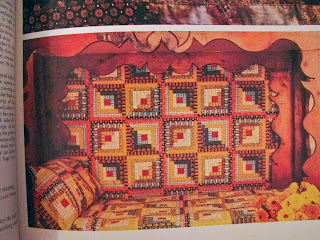I had never really considered how the history of textile design and quilting played a role in the trends I see in quilty blogs and through all of the wonderful groups on Flickr until my mom brought home a handful of books from a quilt show that I had snubbed my nose at attending. The show's description told me right away that I wouldn't be seeing any modern quilting. I considered attending for the sheer value of becoming exposed to more quality handwork but at the last minute decided not to go. What mom brought back, though, was enough inspiration for me to realize that this modern patchwork world that I am a part of is based in so much history that I have no business at all turning my head from the "traditional" and only focusing on the "modern."
Maybe you've all been more privy to this than I have. Maybe these realizations are nothing new for you. What these books revealed to me, though, was a whole new world of inspiration. There have been days when I find myself stalling to start a project because I feel like it is too much of a replica of something I've seen on another bloggers site or in a Flickr group. My current method of getting around this is stepping back and redrawing a design with some modifications or making sure that my fabric selections are not identical. Exploring this whole world of historical patchwork is opening my eyes in a completely new way.
Here, take a look at some of these pages (click to enlarge). I considered giving commentary on each photo and why I'm including it but I think I'll just let them speak for themselves. Maybe you'll find some of your own inspiration in these images . . .
From All About Patchwork





























































2 comments:
Wow, you're right. There is so much in those books that looks downright familiar. It's kind of comforting, for some reason...
First things first. We NEED to be neighbors so we can talk about this stuff in person. Seriously! =)
Secondly - I've had similar thoughts and experiences and love that you took the time to get these out there. I read that somewhere all this new modern quilting movement is, is a way to engage the young folks. Not much is truly new, or modern, it's just what's happening with the younger quilters "now". I have to say I think there is truth in that and your pictures are the proof in the pudding!
Pudding...I could totally eat some pudding....
Post a Comment